
Eleanor Courtemanche, “On the Publication of Fabian Essays in Socialism, December 1889″
The Fabian Essays, published in 1889 by an intellectual London club called the Fabian Society, aimed to make socialism palatable to a largely suspicious British public and became a surprise bestseller. The volume was edited by George Bernard Shaw, who was a leading figure in the Fabian Society before his career as a dramatist. In the Fabian Essays, the Fabians distanced themselves from the insurrectionary radicalism of both Hyndman’s Social Democratic Federation and Morris’s Socialist League, claiming instead that Britain was inevitably and gradually evolving into a sensible socialist state. The Fabians’ advocacy of pragmatic socialist parliamentary politics helped pave the way for the rise of the Labour Party in 1900.

Janice Carlisle, “On the Second Reform Act, 1867”
The Second Reform Act, arguably the signal political event of the 1860s, enfranchised large numbers of working-class men by setting a new financial standard for the suffrage. It became law only after members of Parliament vigorously debated the failed reform measure proposed by the Liberal party in 1866 and the successful, though much amended, Conservative bill of 1867. The law created new problems when it terminated compounding, the customary practice by which landlords added to their tenants’ rent the sums that covered the poor rates and other taxes that those tenants owed. The Second Reform Act therefore exemplifies the way in which one piece of reforming legislation in the mid-Victorian period often created the need for another. Completing at least some of the work that the 1867 act had been expected to do, the Assessed Rates Amendment Act in 1869 reinstated compounding; in doing so, it liberalized the qualifications for voting in the boroughs of England and Wales in a way that moved Britain toward the goal of universal (manhood) suffrage.

Barbara Leckie, “Prince Albert’s Exhibition Model Dwellings”
This paper discusses Prince Albert’s Exhibition Model Dwellings built just off the grounds of the Great Exhibition in 1851. These model dwellings, designed by the architect Henry Roberts, contributed to growing efforts to place the mid-century crisis in housing of the poor at the forefront of public attention. They also made vivid the intersection of print culture and the built environment in three ways. First, they were a response to decades of print exposés of existing housing of the poor. Second, Roberts wrote a pamphlet, a how-to guide of sorts, on the Exhibition Model Dwellings as well as a book on model dwellings in general, The Dwellings of the Labouring Classes, that went into four editions. Finally, the Exhibition Model Dwellings were the topic of many contemporary print commentaries. These latter print commentaries will be the focus of this article. I want both to return the Exhibition Model Dwellings to the prominence they carried in the mid-Victorian period and to explore their contribution to the period’s conflicted response to the crisis in existing housing of the poor with respect to transparency, health, subject formation, and national identity.
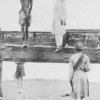
Priti Joshi, “1857; or, Can the Indian ‘Mutiny’ Be Fixed?”
In the 150 years since it occurred, little about the events that shook northern India in the waning days of the East-India Company’s rule has been fixed. The skeletal facts are seldom contested, but their meanings so disputed that what is known appears to recede. Take, for instance, the nomenclature: long known as the “Indian Mutiny,” the events under scrutiny were neither “Indian” (in any pan-Indian or collective sense) nor only a “mutiny.” Alternatives abound—Sepoy Mutiny; Sepoy War; Revolt of 1857; the Uprising of 1857; the Rebellion of 1857; the Great Rebellion; the First War of Independence—each offering an interpretive gloss on the May 1857-June 1858 events. This essay offers an overview of key nodes of debate—who participated and why? who led whom? how planned were the events? how unified were actors—in the current historiography of 1857.

Barbara Leckie, “‘The Bitter Cry of Outcast London’ (1883): Print Exposé and Print Reprise”
Andrew Mearns’s The Bitter Cry of Outcast London is acknowledged as a pivotal document in nineteenth-century British housing reform. It offers an exposé of the housing conditions in one section of South London in 1883 and concludes with a call for social reform. With its explicit and often shocking exposé of housing conditions, its illustration of what it calls the “godlessness” of the poor, and its support for the long-contested need for state intervention, the pamphlet excited considerable attention. In this paper I examine the ways in which the form and rhetoric of this pamphlet—its language, structure, and reliance on print exposé—shape, and arguably compromise, its call for social reform.

Isaac Land, “On the Foundings of Sierra Leone, 1787-1808”
This article offers a critical reading of who was sent to Sierra Leone, why West Africa was chosen as the destination, and discusses the larger meanings, contexts, and legacies of the “Province of Freedom.”
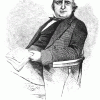
Lesa Scholl, “Irish Migration to London During the c.1845-52 Famine: Henry Mayhew’s Representation in London Labour and the London Poor“
The Great Irish Famine (c. 1845-52) was marked by mass emigration that had a significant impact on the British mainland. This paper examines Henry Mayhew’s representation of Irish migration to London during the height of the famine in his ethnographic study, London Labour and the London Poor. Mayhew’s ambivalence to Irish migration speaks to the widespread fears within Britain of the spread of disease, overpopulation, and increased pressures on wages and employment, but also expresses empathy for the Irish at a time when British sympathies were waning. The domestic spaces of the Irish migrants depict the tensions between mobility and settlement in a way that reinforces their permanence in the British social landscape
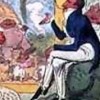
Timothy Johns, “The 1820 Settlement Scheme to South Africa”
The 1820 settlement scheme to South Africa marks an important conjuncture both for the colony’s internal development and for the rhetoric of immigration in the internal politics of Britain. Examining the rationale for the venture in light of the seminal historical event of the age—the Peterloo Massacre of 16 August 1819—and in light of Romantic notions of the “Noble Savage,” this entry attempts to demonstrate how concerns surrounding the South African scheme came to be entangled within larger debates over joblessness, slavery, class struggle, and inanition in early nineteenth-century British culture. Limiting its focus to a reading of The Emigrant’s Cabin (1822, 1834), a poem by the settler-poet Thomas Pringle (1789-1834), the entry argues that 1820 settler rhetoric navigated debates over labor through a novel engagement with time. By imagining a two-tiered system of labor time in the poem—one for settlers, based on unemployment relief and freedom from the oppressive pace of industrial life; and one for the African labor force on the eastern Cape farms, based on missionary discipline, a proto-Victorian program of “improvement,” and freedom from slavery—Pringle’s verse helped foster a British cultural identity in the Cape that resonates even today.
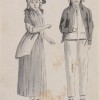
Julie M. Barst, “The Molesworth Report and the Dissolution of Convict Transportation to Australia, August 1838”
This entry focuses upon convict transportation to Australia (which spanned eight decades from 1788 to 1868) and argues that the Molesworth Report of 1838, which successfully built upon the rhetoric of the abolition movement by drawing connections between convicts and slaves, became one of the major deciding factors in eventually putting an end to the entire system of transportation. I claim that the report not only raised questions about the effectiveness of the system, but also generated sympathy for the convicts and led to a transformation in how Britons thought about the punishment of their criminal classes.
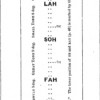
Phyllis Weliver, “On Tonic Sol-fa, January 1842”
In January 1842, John Curwen launched Tonic Sol-fa – a system for teaching people to sing, which he believed would improve individual and national morality. By the third quarter of the century, Tonic Sol-fa numbered hundreds of thousands of practitioners at home and in the colonies, and had outstripped competing sight-singing methods. This essay argues that Tonic Sol-fa promoted a way of managing behavior that worked alongside rational recreation and newly introduced institutional surveillance strategies.
